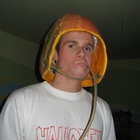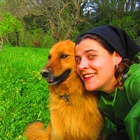Park Güell
Park Güell is one of the best known gardens in the world. It is located in the upper part of the city, which was formerly known as Pelada Mountain or Hill of el Caramel. It is composed of many modernist architectural elements created by the brilliant Antoni Gaudí and commissioned by Count Eusebi Güell, a patron and a friend of the architect.
At the beginning of its existence, the garden, spreading over an area of 17-18 hectares, was almost completely deserted. However, with time it became planted with various native botanic species such as pines, carob trees, oaks, cypresses and Mediterranean palm trees. The initial idea was to turn the hill into a high-standard residential area inspired by the English garden cities of that time. Hence the English spelling of the park's name - 'Park Guell'. Gaudi modelled the park on Jardin de la Fontaine, a garden located in Nimes, where he spend his teenage years.
However, the project turned out to be a commercial failure due to the outburst of the First World War. As a result, only two houses were built: Gaudí House-Museum, where the architect lived from 1906 to 1925, and the Casa Trias, the property of a reputable Barcelona lawyer. Also, the majority of the communal buildings found in the park's area were built according to the initial draft.
Gaudí's idea was to integrate all of his works with nature. Therefore, all elements found in the park resemble natural elements such as fallen trees or stalactites normally found in caves. The park is dominated by undulating shapes and surrealistic geometries. It is also characterised by absolute absence of straight lines. Another attraction of the park are the mosaics - multicoloured or white tiles carefully placed by Gaudí's faithful collaborator, Josep Maria Jujol, who used Gaudí's technique of trencadís.
Many elements found in the park resonate with religious and political imagery. Gaudí conceived the idea of a spiritual journey through the slope of the hill (approximately 60 metres long) on top of which he envisioned a chapel. However, the chapel was never built. Instead, the place is now occupied with the monument to Calvary, which is composed of three crosses symbolizing the crucifixion of Jesus and the two thieves. Two of the crosses are pointed towards 4 cardinal directions while the third one has an arrowhead, pointing at the sky.
Near the main entrance, at the bottom of the hill (Calle Olot), Gaudi built two pavilions in the Modernist style, which were later used as the management centre. It is believed that both pavilions were inspired by the German fairy tale Hansel and Gretel. Both of them have sinuous shapes and stone parabolic domes covered with trencadís. The smaller of the pavilions is crowned with a gaudinian cross that has four arms of wrought iron. The other pavilion, the older and bigger one, is a three-storey building with a fly agaric mushroom on its top. In front of both pavilions, there is the main staircase as well as three welcoming fountains, one of which is in the form of a lizard, the symbol of the city of Nimes, the park and Barcelona.
Nearby, there are two caves principally designed as garages, which have perfect acoustics allowing the sound to travel through the walls. Above the main entrance there is a grand staircase leading to the Hipóstila room with 86 Doric columns (6 metres high and 1.20 metres in diameter), which prop up the main hall located above them. They also function as water sources, channelling stormwater and thus irrigating the park. The room was initially designed to function as the centre of urbanization. However, its excellent acoustics attracts many musicians which make the tours around the park more enjoyable for the tourists. The ceiling of the room is made of trencadís mosaics symbolizing the four seasons.
In the centre of the park, there is an uncemented square covering an area of approximately 3000 square meters surrounded by an undulating bench covered with trencadís, which is the longest bench in the world. The square also functions as a scenic overlook on the city. Taking a walk through the park one can find many unique viaducts designed to allow the carriages to transport the goods, the most famous of which is El Rosario, with a path covered with balls representing Rosary beads. By the rosary path we can find Gaudí's House-Museum, designed and built by the Catalan architect Antoni Francesc Berenguer and Gaudí himself. This building was supposed to be the pilot project which would serve as a model for the rest of the houses, which, however, have never been built. Gaudí lived in the house from 1906 to 1925.
After the death of Eusebi Güell, Barcelona City Council bought the park from its heirs and opened it to the public in 1922. In 1984 UNESCO included it on the World Heritage List.
Inside of Park Güell you can also find: Park Güell's bench , Gaudí's House-Museum .
Park Güell has the following opinions (reports) create opinion
patryk

|
Park Guell - a must to see in Barna | Although I have been to Park Guell more than 5 times it still amazes me (and remains my favourite place in Barcelona). Especially in low-season when it is not so crowded as in the summer. Getting there requires some effort if you want to find it for the first time and you also need to walk up th... |




 2011-07-26 23:29:45 2011-07-26 23:29:45
|
marta

|
escalators :) | It is a little bit difficult to go there from the metro station. But finally when you will the escalators, by which you will go to the top of the mountain then you appreciate the difficulties you had to faced it :) I had a great fun by going up with doing nothing :) also there are amazing views - gr... |




 2011-07-27 17:27:06 2011-07-27 17:27:06
|
airún

|
Genial!! | Sitio perfecto para ir a pasar el dia y disfrutar de todos sus rincones y de todas las actividades que hay en el parque güell, desde músicos de calle hasta pintores de retratos. |




 2011-10-12 23:20:52 2011-10-12 23:20:52
|
Similar places by:
| Architect |

|
Antoni Gaudí i Cornet Josep Maria Jujol i Gibert |
|---|---|---|
| Style |

|
Art Nouveau |
| Category |

|
park monument fountain |
| Material |

|
ceramics floor tile water tree shrub grass |
| Hint |

|
Very crowded Difficult to reach |
| Neighbourhood | El Carmel (Horta-Guinardó) |
|---|---|
Price 
|
gratis |
| UNESCO | 320bis |
| Geographical coordinates | 41.4136860, 2.1528650 |
| Address | 08024 Barcelona, Carrer d'Olot 13 |
| Construction dates | 1900 - 1914 |
| Area | 20.00 |
| More information | official website |
| How to arrive? | official transport site |
















 9x
9x